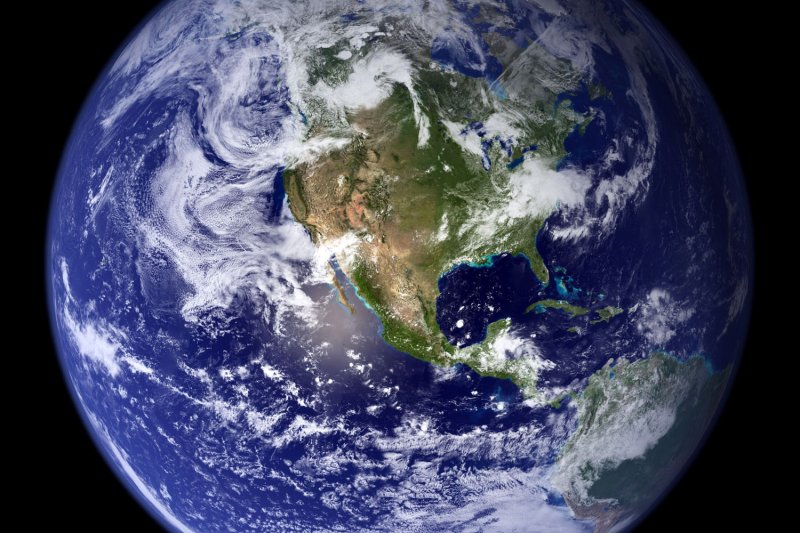By the end of the century, Earth is likely to host more than 11.2 billion people. File photo by UPI Photo/NASA |
License Photo
SEATTLE, Aug. 10 (UPI) -- By 2100, demographers and statisticians at the United Nations Department of Economic and Social Affairs expect the world's population to top 11.2 billion.
Today, Earth's population sits at 7.3 billion. If the latest U.N. Population Division report is correct, that number will hit 9.7 billion by 2050.
The new numbers were shared with those attending a demographic forecasting session at the 2015 Joint Statistical Meetings held in Seattle.
Researchers used a complex combination of historical population trends, regional fertility rates and aging data to build a world population projections model. Such modeling isn't the most precise form of scientific prediction, but researchers say with 95 percent certainty the global population will be somewhere between 9.5 billion and 13.3 billion by the end of the century.
While Asia will remain the world's most populous continent -- expected to peak at 5.3 billion people by 2050 -- Africa will be responsible for a large portion of the planet's population growth. Though Africa is currently home to just 1.2 billion people, it is expected to host between 3.4 billion and 5.6 billion people by 2100.
Researchers say population growth in high fertility countries like Niger, Somalia, Nigeria, Gambia and Angola, can exacerbate domestic problems, putting pressure on environmental, health and economic resources, as well as on governmental and social infrastructure, like schools, police and political organizations.
Likewise, countries with declining fertility rates and aging populations may need to shift resources to account for the shifting needs of their populace.
"Developing countries with young populations but lower fertility -- such as China, Brazil and India -- face the prospect of substantial population aging before the end of the century," researchers explained in a press release.
Population change in the United States is expected to be less dramatic, with the county expected to add some 1.5 million each year. At that rate, the U.S. population would total 450 million by 2100.















